Environment
Carbon Dioxide Emissions and EVs

Founder of Greenpeace, Patrick Moore, has some knowledgeable things to say about carbon emissions and CO2 in the atmosphere. Many politicians and “scientists” are stating that CO2 is the big baddie that will cause us all to burn up in smoke as the temperature of the earth will continue to heat up; and that life on earth is in terrible danger, and that the only way out of this escalating CO2 is to inflict all humans to pay higher taxes and drive EVs. It all sounds a little fishy!
According to the Intergovernmental Panel on Climate Change (IPCC), CO2 emissions from fossil fuels, which constitute 85% of our energy use, must be reduced to zero by 2100. It is their idea that a vast and diverse mix of policies should be employed to restrain and reduce the use of light duty vehicles (LDVs), the sort of vehicles that you and I drive. The IPCC suggests “aggressive policy intervention to significantly reduce fuel carbon intensity and energy intensity of modes, encourage travel by the most efficient modes, and cut activity growth where possible and reasonable”. That sounds like severe action going down like a lead balloon upon hard-working people in the world trying to pay escalating taxes to the fat cats in high places. Maybe some of it’s true.
Apparently, those in the IPCC claim that “if we don’t save ourselves from ourselves we’re toast!” Scientist Patrick Moore says that “Here is what is strange, though. All life is carbon-based; and the carbon for all that life originates from CO2 in the atmosphere. All of the carbon in the fossil fuels we are burning for energy today was once in the atmosphere as CO2 before it was consumed by plankton in the sea and plants on the land. Coal, oil and natural gas are the remains of those plankton and plants that have been transformed by heat and pressure deep in the earth’s crust. In other words, fossil fuels are 100% organic and were produced with solar energy. That sounds positively green!”
Other scientists also say these coal and oil remains were laid down during the catastrophic flood that occurred over the earth’s surface as recorded in biblical events.
Patrick Moore, and other scientists, also state that if there were no CO2 in the earth’s atmosphere, the earth would be a dead planet. The US Environmental Protection Agency (EPA) has deemed this essential ingredient for life a pollutant! How can CO2 be bad?
Carbon Emissions is the term used by governments and policymakers as the emissions that come from burning fossil fuels for energy. Patrick Moore continues, “…This term is entirely misleading because CO2 is not carbon. CO2 is a colourless, odourless, tasteless gas which is an indispensable food for all living things. Can you have too much of it? In theory, yes. That is what climate alarmists say is happening now! They are stating that “CO2 levels are getting too high!” Are they right? The Big Picture tells us something surprising. For most of the history of life on earth, CO2 has been present in the atmosphere at much higher levels then it is today. During the Cambrian explosion, when multicellular life came on the scene, CO2 levels were as much as 10x higher than they are today. From a Big Picture perspective, we are actually living in a low CO2 era…”
Patrick also suggests that science tells us that “… the optimum growth for CO2 is 4–5x what is currently found in our atmosphere. This is why quality greenhouse growers all around the world actually inject CO2 into their greenhouses. They want to promote plant growth, and this is the way that they do it. Likewise, higher levels of CO2 in the global atmosphere will promote plant growth. This is a good thing! This will actually boost food and forest productivity, which will come in handy with the human population of earth set to continue to grow.”
Patrick Moore, co-founder of Greenpeace, for Prager University, states that “… we are seeing the positive effects of increased CO2 now. Satellite measurements have noted the greening of the earth as crops and forests grow due to our higher levels of CO2. It turns out that Carbon Dioxide (CO2) are not dirty words after all. We should celebrate CO2 as the giver of life that it is.”
What are the more dangerous emissions from fossil fuels? The majority of vehicle exhaust emissions are composed of carbon dioxide, nitrogen, water vapour, and oxygen in unconsumed air. Carbon monoxide, unburned fuel, nitrogen oxides, nitrated hydrocarbons, and particulate matter such as mercury are also present in vehicle exhaust emissions in smaller quantities. Catch these nastier particulates, which are hazardous to our respiratory system, via the catalytic converter or other means, and the conventional internal combustion engine is not quite such a monster. In fact, a decent hybrid vehicle for city driving along with hydrogen fuel-based vehicles seems a much better alternative to a mass wave of EVs and taxes. Hybrids and hygrogen-celled cars in congested areas seem a perfect fit for now.
Hybrids currently available in Australia include: many Toyota and Lexus models, Toyota Corolla SX Hybrid, Toyota RAV4 GXL Hybrid, Toyota Camry Ascent Sport Hybrid, Mitsubishi Outlander PHEV, Hyundai Ioniq, BMW X5 xDrive45e, Lexus ES300h Sports Luxury, Volvo XC90 T8 Twin Engine Hybrid, Mercedes-Benz C 300e PHEV and BMW 330e iPerformance PHEV.
If you’re interested in more from Patrick, have a look at: https://www.prageru.com/video/the-truth-about-co2/
EVs and the Japanese Manufacturers
I like to get a feel for what is truly happening in the EV world by heading over to the Japanese to see what they are up to. The Japanese make the best cars in the world, at least from a reliability and practical point of view, so it makes sense to me to have a look at what their plans are when it comes to EV innovation, invention and implementation.
Mazda

Mazda MX 30 EV
Mazda is planning to introduce ‘Skyactiv Multi-Solution Scalable Architecture’ for hybrids, PHEVs and EVs in 2022, and they plan to offer three EV models, five PHEV models and five hybrid models sometime between 2022 and 2025. Mazda will also keep hybrids and PHEVs as part of their saleable new cars beyond 2030.
By the end of 2023, Mazda plans to show at least two plug-in hybrids by the end of the year.
In 2026 Mazda plans to show the platform for a new generation of EVs in the early part of the year.
By 2030 Mazda plans to offer a hybrid or electric variant for every model that Mazda has in their line-up. However, even though Mazda will develop a dedicated EV platform by 2025, Mazda’s majority of vehicles beyond 2030 will be hybrids and plug-in hybrids, and, as such, Mazda is not about to stop developing its internal combustion engines anytime soon.
Honda
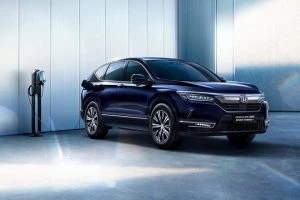
Honda EV Crossover
Honda plans to develop its own solid-state battery tech, rather than relying on outside developers.
By 2023, a Honda EV built in partnership with GM, reportedly a crossover, is expected to enter production.
Honda foresees that 40% of their models will be electric or hydrogen fuel-cell powered by 2030, climbing to 100% by 2040. Honda is one of just a handful of automakers alongside Toyota, Hyundai, and BMW, to devote plenty of their development energy into to hydrogen fuel-cell vehicles.
Toyota
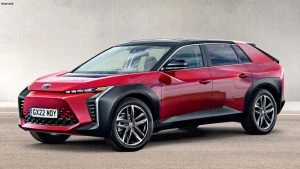
Toyota BZ EV Concept
By 2025, Toyota plans to launch 60 new hybrid, electric, or fuel-cell vehicles by the end of that year, and it also expects to have reached its goal of selling 5.5 million EVs each year. Their dedication to hydrogen fuel-cell vehicles is strong, and they remain big game players in this sort of technology.
Looking across the Tasman (where NZ’s PM, Jacinda Ardern, put her foot in it by claiming that Toyota would be providing EV utes in just 2 more years) it is evident that Toyota will not be putting all their eggs in one basket and going totally bent on EV production. Toyota is adamant that a slow EV uptake is more likely, and hence they would not be giving up on their particularly good hybrid engine technology any time soon.
Nissan

Nissan ids Concept EV
Nissan is the manufacturer of the highly successful Nissan Leaf EV Hatchback, which has been in production for some years now. By 2023, Nissan plans to have launched eight EVs by the end of the year and will be hoping to be on target to sell 1-million hybrid or electric vehicles, globally, per-year. Nissan states that their hybrid technology and their technology to improve their internal combustion engines won’t be stopping before 2030, at least.
Mitsubishi
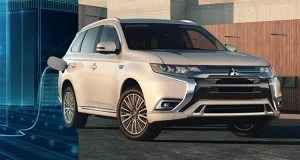
Mitsubishi Outlander PHEV
Mitsubishi has the marvellous Outlander PHEV, which has been in production for many years now. By 2030, Mitsubishi plans for 50% of its global sales to come from hybrid or electric vehicles. I guess that leaves 50% to be still made up of efficient internal combustion vehicles.
Subaru
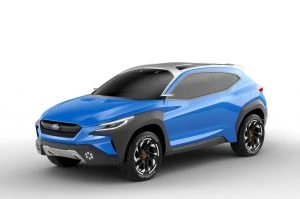
Subaru Solterra EV Concept
Subaru, by 2030, expects 40% of its global sales to come from hybrid or electric vehicles. By 2035, Subaru plans to have a hybrid or electric version of every vehicle in its line-up. Subaru seems to be singing off a similar song sheet to Toyota, where they both suggest that the hybrid vehicle will prove to be more popular in the short term, particularly as the EV infrastructure has a long way to go.
By 2050, Mazda, Mitsubishi, and Nissan have made bold plans to reach net-zero carbon emissions.
The big questions are: Will the EV-charging infrastructure match the manufacturer claims? Will people be able to afford an EV, let alone the huge cost to make their home charge ready, as the ideologically bold demands that some governments introduce along with big taxes? Who is going to pay for all of this?
I read a recent comment where a reader of ‘Car and Driver’ made a very informed comment:
“It’s a ‘no thanks’ on Li batteries from me. Lithium extraction has already spoiled the Atacama desert in Chile and now they have their sights set on the American West. I can reduce my CO2 footprint far more by just driving less than by purchasing a 100 kWh battery, and the 10-20T of CO2 that was released to make it. I’ll wait for fuel cells. As a Toyota driver… I have time.”
Why Are 20% Of EV Owners In California Switching Back To Petrol?

You’d think that in a US state like California, which always seems to be so progressive, liberal and with-it – and which has a governor who has decreed that by 2035, all new cars sold will be EVs or at least “zero-emissions” cars – you’d see people flocking to taking up EVs left right and centre. After all, if you think about it for a moment, Governor Gavin Newsom’s call would rule out not just your good old-fashioned petrol or diesel vehicle but also hybrids, which have both petrol and electric engines. It also applies to trucks (although the article may mean what we call utes and they call pickup trucks in the US of A), which makes me wonder how they’re going to ship goods about the place, as electric big-rigs are still at the developmental stage.
Anyway, given these points, it was something of a surprise to read a study carried out in California that found that about 20% of those surveyed said that they had gone back to petrol-powered vehicles after having owned an EV. OK, to be more precise, 20% of hybrid owners had gone back and 18% of battery-powered EV owners had switched back. You can read it for yourself here: https://doi.org/10.1038/s41560-021-00814-9 (this will take you to the summary – to read the full thing, you have to pay).
The big question is, of course, why they’re doing this. The answer seems to be the issue of charging speed. The study seemed to find that Tesla owners didn’t seem to want to switch back, given that Tesla provides superfast charging for life for their vehicles – although I dare say that the cost of a Tesla has something to do with the fact that their owners aren’t switching back. However, those with other types of EV are more likely to switch back (compared with Tesla owners).
The people who were most likely to switch back were women, those living in rental homes, those living in high-rise apartments and those who didn’t have access to a Level 2 charger or higher at home or at work.
Some of these factors are easy to understand. If you live in a rental home, you probably don’t want to pay to have a Level 2 EV charger installed in something that you don’t own – if your landlord would let you do this in the first place. Landlords probably don’t want to pay to put in Level 2 EV chargers in rentals – although this might change in future; in the past, they didn’t always put in dishwashers but it’s common enough now. In the case of an apartment, when you think that the garage or other parking space is all the way down there while you live right up there, or if you have to park your vehicle in a shared space and someone else has bagged the charger… well, you can see just how inconvenient it is.
The length of time it takes an EV to charge also probably has something to do with why women were more likely to ditch their EVs. If your EV is parked up and charging in a shared garage in an apartment building, you’ll have to nip down now and again to check how it’s going. In the case of a public charger, you may complete your errands before the car has finished charging and have to wait around. This means that you’ll be hanging around for a while. Unfortunately, it can be a nasty world out there for a woman. Even though 99% of guys are decent blokes, there’s always that 1%. And you never know if that guy on the other garage or looking in your direction or walking towards you is Mr 1% or not. This means that no woman really wants to spend longer than she has to in a public space that may not be all that well lit at night, with her only safe space being a car that isn’t quite charged up. I’m speculating here, but speaking as a woman, that would be a concern I’d have – to say nothing of the hassles of trying to keep kids entertained while the car charges and being held up waiting for the car to charge when there’s a ton of things to do.
The issue seems to be charging time and access to Level 2 chargers. Let’s take a bit of a look at different charger types and you’ll get an idea of what’s involved:
Level 1 chargers: Slow as a wet week – it takes up to 25 hours to charge a typical EV with enough to get 100 km of range. However, it’s good for topping up plug-in hybrids. The advantage of these is that they can plug into the standard Australian power outlet without any need for the services of an electrician.
Level 2 chargers: These are faster than Level 1 chargers, taking up to 5 hours to give a typical EV 100 km of range. However, because of the charge they carry, they need special installation and older homes may need the wiring upgraded to carry the load, and it needs a special plug, which means you’ll need an electrician to come in and do the job of installing them.
Level 3 chargers: These use DC rather than AC power, and they are very expensive to install – putting one of these chargers could cost nearly as much as a brand new car. Your house doesn’t have this type of power supply, so they’re only available commercially. However, they’re faster, giving 70 km of range in 10 mins of charging.
Of course, these times are approximate and will vary from vehicle to vehicle – like charging times for other electrical things vary. However, full charge times are usually measured in hours rather than minutes. If you’ve got grumpy kids in the car, even 10 minutes for a top-up charge at a fast charge station can seem like eternity…
Will Vehicle Carbon Taxes be Revisited?
A few years ago, there was talk of a proposed ‘carbon tax’ on new vehicles by slugging non-compliant auto makers with fines in an effort to reduce emissions. However, it became very clear that such a move would leave the door open for car manufacturers to pass on these fines to motorists in the form of increased car prices. In the meantime, alternative fuel technologies like hydrogen, electric vehicles and hybrids have failed to catch on, while phasing out of diesel and petrol vehicles has essentially been limited to offshore markets rather than here in Australia.
Even if such penalties were to be limited to non-compliant vehicle manufacturers that fail to meet stricter emissions standards, the result would have a flow-on effect across the new car market, effectively reducing the notion of a free market and any ‘true’ choice that motorists have when it comes to having access to the vehicle they want.
The real matter at hand
However, for all the focus on the technicalities of the ‘tax’, the real matter is how we manage the environmental burden from vehicles in an equitable manner. Or should we be content in punishing motorists for driving cars that are less fuel efficient than their peers?
Recent examples would suggest anything but. After all, take a look at states like Victoria, New South Wales and South Australia and it becomes immediately apparent that road usage charges for electric vehicles loom as a distinct risk that could threaten the uptake of electric vehicles. That is one example where an equitable manner has been sought to apply to the use of our roads, but there is no denying it is also ‘punishing’ the sort of behaviour that we are trying to promote.
Nonetheless, back to the original tax proposal, and in many respects, it never really stood a chance. In some quarters, the measures were tipped to start as early as next year, however, the reality is, Australia’s new car market continues to be defined by the very makes and models that would theoretically be punished for falling foul of emissions standards. With our love for SUVs and dual-cab utes, should Australians be locked out of some of their favourite cars by virtue of significantly higher prices as manufacturers seek to offset the hit to their hip-pocket?
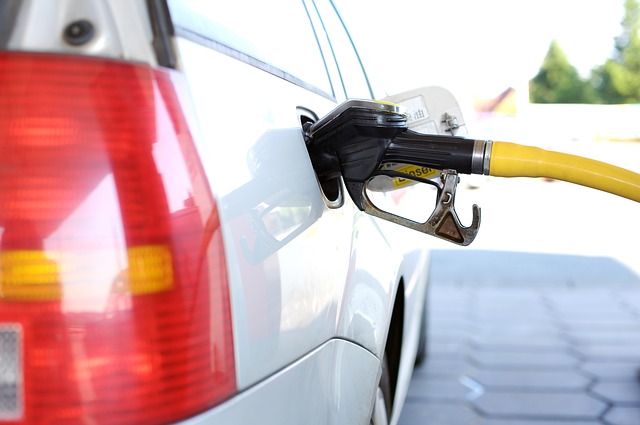
It’s also been stated a number of times that Australia often misses out on some of the ‘cleaner’ or more advanced iterations of certain vehicles from the European market due to the standards of our emissions and fuel quality. Again, however, costs are at the centre of the discussion here, and in a new car market that is finally seeing signs of life, would industry players want to potentially derail this when a number of supply-chain issues have already weighed on upwards momentum?
All up, however, we do have some reason to be concerned about motorists holding onto their vehicles for longer – in the process, increasing the average age of cars on our road. Not only does this serve little to stimulate the economy but it won’t do much to tackle emissions across the nation’s entire fleet.
Several years on, are we actually any closer to answering the question as to how we encourage auto-makers to step away from higher emissions vehicles? Down under, it doesn’t appear so.
